| |

Home
|
|
| |
Books of the 20th Century Exhibition
An introduction to some publications that have shaped the field of education. |
|
|
|
| |
|
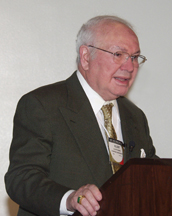 |
The Educational Imagination: On the Design and Evaluation of School Programs
by Elliot W. Eisner (1933-2014) New York:
Macmillan Publishing, 1979.
|

|
|
|
| |
|
|
|
“What is truly sad is that those of us in the field of education––teachers, administrators, professors of education––have so seldom tried to help the public understand the complexities of education as a process. . . . Why is it that we have so seldom pointed out the practical naivete of promises to make schools more effective by setting up minimum standards and by measuring, as the former associate U.S. commissioner of education said, the equivalent of educational air-conditioning?”
––Elliot W. Eisner, The Educational Imagination, 1979, p. 13. |
|
|
|
|
|
| |
|
|
|
|
|
|
|
|
|
|
|
|
|
|
|
|
|
|
|
|
|
|
|
|
|
|
|
|
|
|
|
|
As certain terms and phrases come to identify individuals, Elliot Eisner’s “educational connoisseurship” brought new dimensions to the fields of educational evaluation, instruction, and curriculum. The Educational Imagination, however, should not be seen solely as a book that redefines and develops this term. In addition to a chapter devoted to connoisseurship and educational criticism, Eisner analyses the field of curriculum and extends many of the most basic concepts, distinctions, and definitions––from curriculum and instruction to referential adequacy and structural corroboration. Few works so brilliantly interweave curriculum theory and development with educational planning and evaluation. Eisner’s “A ‘Final’ Word” summarizes those ideas that “fly in the face of those that have guided our thinking about education and evaluation. For this I make no apology. So many of the assumptions that we have used have, in my view, been inappropriate for the problems with which teachers and others concerned with planning school programs must deal” (Eisner, 1979, p. 261). No apology is necessary, indeed.
|
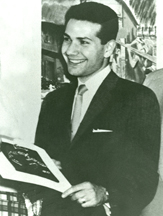 Elliot Eisner in 1958
Elliot Eisner in 1958
as a 25 year old art teacher
in the Chicgao public schools. |
|
|
|
|
|
|
|
|
|
|
|
|
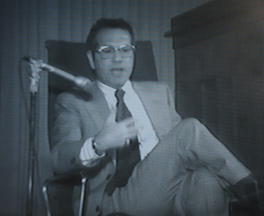
|

Historic video footage of Elliot Eisner
from the 1976 Milwaukee Curriculum Theory Conference
|
|
|
|
|
|
|
|
|
Reflections on The Educational Imagination by Elliot W. Eisner
reprinted from the Museum of Education's Books of the Century Catalog
The Educational Imagination was written to enable me to think more clearly about the complex components that influence the character of our schools, the shape of our programs, and the ways in which they might be improved. My aim on an intellectual level was, as I have indicated, clarification. Writing, for me, is a way to try to come clear; there is something about the stability and vulnerability of the written word that makes it an attractive target for analysis. Analysis, in turn, sharpens distinctions and locates more general principles. The Educational Imagination, as much as anything, describes a road that I have taken, branches and all, in 1979.
In 1979, I was concerned with the remnants of behaviorism, the mindless embrace of instructional objectives defined in highly specific terms and believed to be the ingredients necessary for making teaching rational and curricula effective. In 1979, I was concerned with the impact of the school as a form of organization and the way in which it influenced the behavior of both teachers and students. In 1979, I was concerned with reliance on extrinsic rewards systems as a way of shaping the behavior of students, and I was concerned with accountability and the use of standardized achievements tests as a way to take the educational temperature of our schools.
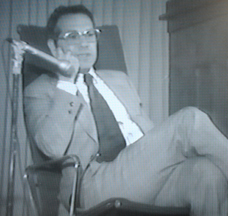
Twenty years have now passed. Are these concerns still relevant? What changes would I make in my view of school improvement? Put another way, is The Educational Imagination out of date?
Although this may represent a lack of growth on my part, I regard the concerns that I expressed and the general views that I articulated in 1979 to be even more relevant today than they were then. We are currently in the midst of a national effort to homogenize education by developing national standards and tests that measure their achievement. We seem to believe more now than in the past that test scores are really informative proxies for the quality of schooling children and adolescents receive. We are so infatuated with the use of standards that we have them for just about everything; content, student performance, teacher performance, but not––of course––for the resources schools need in order to realize the standards that they are urged to employ. What we seem to desire are measures that will make comparisons among schools possible. After all, we know without further research that students in low income areas, especially those belonging to minority groups, are likely to receive significantly lower test scores than those in the Scarsdales, Glencoes, and Beverly Hills of the world. Yet, we want “objective” certification and the use of a common test related to a common curriculum framework is a way the public believes to get such information. With it, we can rank order schools by creating league tables that provide the public what it seems to want, a comparative basis for school performance.
What is troublesome and what The Educational Imagination addressed in 1979 is that such procedures are not likely to improve the quality of our schools. One of the major messages in The Educational Imagination is that the system as a whole needs to be addressed, that subtleties within the system matter, that the kind of incentives employed are consequential, that unless students have joy in the journey, what they learn is likely to be relegated to unrecoverable memories. In short, The Educational Imagination tried to paint the wide picture, a picture in which context was taken into account and not only the context of the classroom, the context of the school and, even beyond that, the context of the community and the nation, of colleges and universities that too influence often in a conservative way what schools should pay attention to.
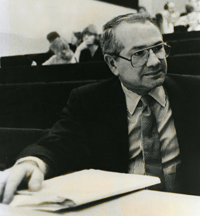
In The Educational Imagination I tried indirectly to acknowledge the important potential of the arts in the development of the mind. I am pleased to say that some progress at the time of this writing is being made along these lines. Yet, there is much to do. The typical domains of literacy and numeracy defined in terms of language and number still dominate our conception of what intelligence consists of and what education should promote. We are moving ahead, I believe, but slowly.
Finally, I tried in The Educational Imagination to use language that was personal, literary, and whose connotations did not contradict the humanistic orientation that I embrace. The book’s longevity in the field suggests that in this regard, at least, I have succeeded in writing a book whose message has these features. Hopefully, the humanistic vision of education that The Educational Imagination describes will be created in the next twenty years in American schools. Should that aim be realized, The Educational Imagination might then be put to rest as a historical document of another age.
Elliot W. Eisner, Books of the Century Catalog, 2000, p. 118-119. Craig Kridel, editor/arrayer (2000). Books of the Century Catalog (Columbia, SC: Museum of Education). |
|
|
|
|
|
Preface
“All written works, but especially books that attempt to open some new ground, have an autobiographical character. This book is no exception. In it I have attempted to draw on a background in the visual arts that has, as long as I can remember, been an important part of my life. From my earliest recollections as a child in Chicago, art was always important to me and has continued to be a major interest. It is from this interest and professional involvement in art and art education that I have drawn many of the assumptions on which this book is based.”
––Elliot W. Eisner, The Educational Imagination, 1979, p. vii.
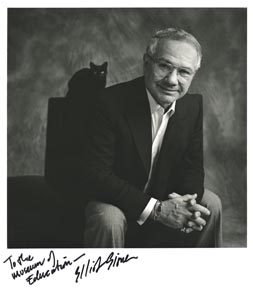
Closing Lines
“Although I do not advocate abandoning scientific methods to study educational phenomena, I have argued in this book that those methods in no way exhaust the means through which educational phenomena can be studied. This book has attempted to provide not an alternative but rather an invitation to the pursuit of a complementary approach. . . . That such an approach to educational evaluation has not been salient in the literature is obvious to anyone familiar with it. Our conception of research, our conception of knowledge, and our conception of evidence have derived from other premises. The time has come, I believe, to look to other views, not as a rejection of the old ones, but for the promise that a fresh perspective can provide. Educational criticism represents one place on which to stand”
––Elliot W. Eisner, The Educational Imagination, 1979, pp. 286-287.
The Educational Imagination: On the Design and Evaluation of School Programs by Elliot Wayne Eisner. New York: Macmillan Publishing Co., 1979. [xv; 293 p.; 24 cm.]

The Eisners, 2006
to return to the
Books of the 20th Century Exhibition |
|
|
|
|
|
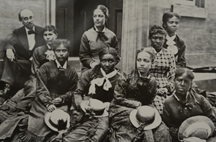



![]()








